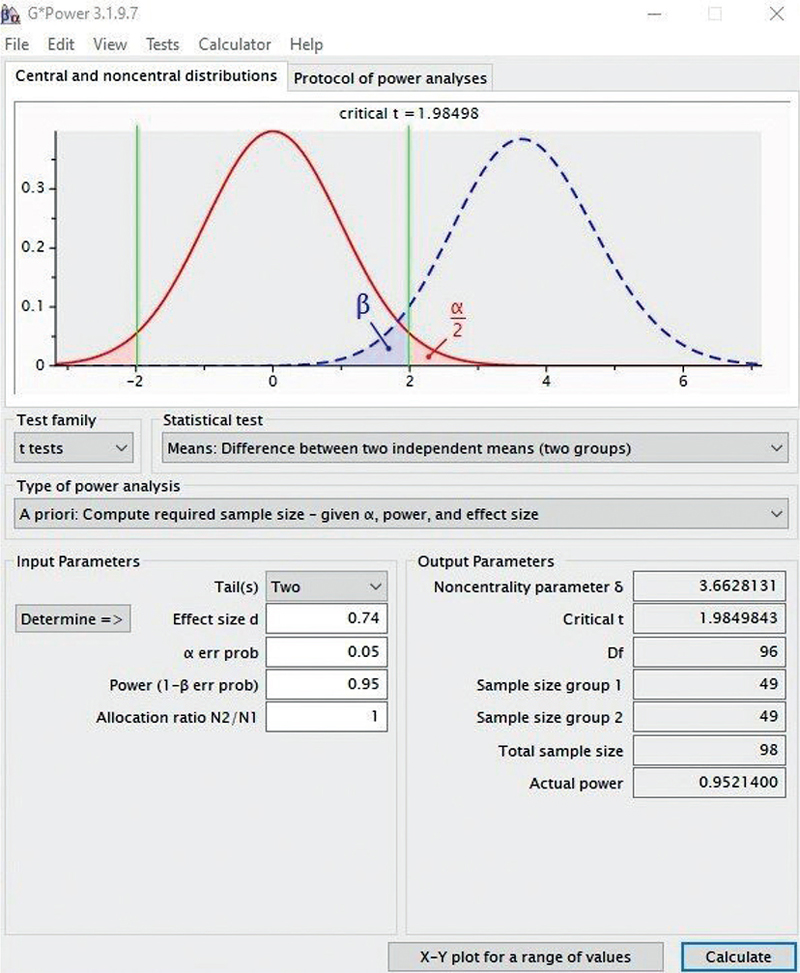LETTER TO THE EDITOR
COMMENTARY ON “COMPARISON OF QUADRICEPS AND HAMSTRINGS MUSCLE STRENGTH AFTER EXERCISES WITH AND WITHOUT BLOOD FLOW RESTRICTION FOLLOWING ANTERIOR CRUCIATE LIGAMENT SURGERY: A RANDOMIZED CONTROLLED TRIAL”
Aditi POPLI, BPT, (MPT)1, Riya KALRA, BPT1, Diggaj SHRESTHA, BPT, (MPT)1, Kanu GOYAL, MPT1 and Manu GOYAL, PhD1
From the 1Maharishi Markandeswar Institute of Physiotherapy and Rehabilitation, Maharishi Markandeswar (Deemed to be University), Mullana-Ambala, Haryana
Citation: J Rehabil Med 2023; 55: jrm9580. DOI: https://doi.org/10.2340/jrm.v55.9580
Copyright: © Published by Medical Journals Sweden, on behalf of the Foundation for Rehabilitation Information. This is an Open Access article distributed under the terms of the Creative Commons Attribution-NonCommercial 4.0 International License (https://creativecommons.org/licenses/by-nc/4.0/)
Accepted: Mar 27, 2023; Published: Jun 13, 2023
The authors of the original article (Vieira de Melo et al.) were invited to reply to the commentary on their paper, but did not respond.
Correspondence address: E-mail: manu.goyal@mmumullana.org
The recently published article by Vieira de Melo et al. (1) “Comparison of quadriceps and hamstrings muscle strength after exercises with and without blood flow restriction following anterior cruciate ligament surgery: a randomized controlled trial” is well documented with interesting findings. The authors conclude that, after anterior cruciate ligament reconstruction, using exercises at 30% of 1 repetition maximum (1RM) with blood flow restriction (BFR) or 70% of maximum repetition without occlusion, the group that used BFR showed a statistically more rapid improvement in quadriceps and hamstrings muscle strength, and physical function of the knee. However, we would like to highlight some aspects of this paper that require clarification.
Firstly, trial number “RBR-9bdgxh” for the study registered in the Brazilian Registry of Clinical Trials (ReBEC) is titled “Comparison of quadriceps and hamstring muscle strength after exercise at 30% of maximal strength with and without peripheral vascular occlusion in the anterior cruciate ligament postoperative period: a randomized controlled trial” which does not match the title of the published article. Also, there is a conflict regarding the study design, as the authors use the term “randomized controlled trial”, but there is no pure control group present in the study, and hence the design should be modified to quasi experimental design (2).
Secondly, the abstract of the published article does not fulfil the basic requirements of the reporting guidelines for methods. The authors have not provided any information regarding the selection of study participants on the basis of age group or regarding the male to female ratio. In addition, the abstract exceeds the limit of 200 words (3).
Thirdly, the keywords listed in the article do not comply with Medical Subject Headings as set out in the journal guidelines; for example, rehabilitation; exercise therapy; and physical therapy specialty, blood flow restriction are not MeSH terms (4).
Fourthly, the sample size stated in the study appears to be inaccurate. According to reference (5) for effect size given in the sample size section, an estimation of sample size was performed using G*power 3.1.9.7 Software. As shown in Fig. 1, the calculated sample is 98, 49 in each group, which does not comply with the sample size in the published study (6).

Fig. 1. Sample size calculation by G* Power software 3.1.9.7.
In the statistical analysis section, the data set given does not show normal distribution. It is not clear why the authors have used an analysis of variance (ANOVA) test, a parametric test for analysis of demographic data, instead of a Kruskal–Wallis test, which is an appropriate test according to normality distribution. Also, the authors should have used Mann–Whitney U test for analysis of the difference between 2 groups (7). It is also observed that outcome analysis was performed at different times, i.e. weeks 0, 4, 8, and 12, but no specific statistical tests can be identified in the study. It is suggested that Friedman’s test is incorporated to analyse the intervention effect at different times.
Lastly, in the descriptive statistics mentioned in Table I the terms means and standard deviations should be expressed in terms of median and interquartile range according to the non-homogeneity and not-normal distribution of data (8).
The work conducted by the authors in this study is, however, commendable for enlightening professionals regarding the authors’ innovative ideas and their application.
REFERENCES
- Vieira de Melo RF, Komatsu WR, Freitas MS, Vieira de Melo ME, Cohen M. Comparison of quadriceps and hamstring muscle strength after exercises with and without blood flow restriction following anterior cruciate ligament surgery: a randomized controlled trial. J Rehabilitation Med 2022; 54: jrm00337.
- Portney LG, Watkins MP. Foundations of clinical research: applications to practice. 3rd edition. Philadelphia: FA Davies Co., 2015; p. 197–198.
- Journal of Rehabilitation Medicine. Author guidelines. Available from: https://medicaljournalssweden.se/jrm/authorguidelines
- National Library of Medicine. MeSH on demand. Available from: https://www.nlm.nih.gov/oet/ed/mesh/meshondemand.html
- Lixandrão ME, Ugrinowitsch C, Berton R, Vechin FC, Conceição MS, Damas F, et al. Magnitude of muscle strength and mass adaptations between high-load resistance training versus low-load resistance training associated with blood-flow restriction: a systematic review and meta-analysis. Sports Med 2018; 48: 361–378.
- Erdfelder E G*-Power 3. A Flexible statistical power analysis program for the social, behavioural and biomedical sciences. Behav Res Methods 2007; 39(2): 175–191.
- Kaur A, Kumar R. Comparative analysis of parametric and non-parametric tests. J Comput Math Sci 2015; 6: 336–342.
- Habibzadeh F. Statistical data editing in scientific articles. J Korean Med Sci 2017; 32: 1072–1076.